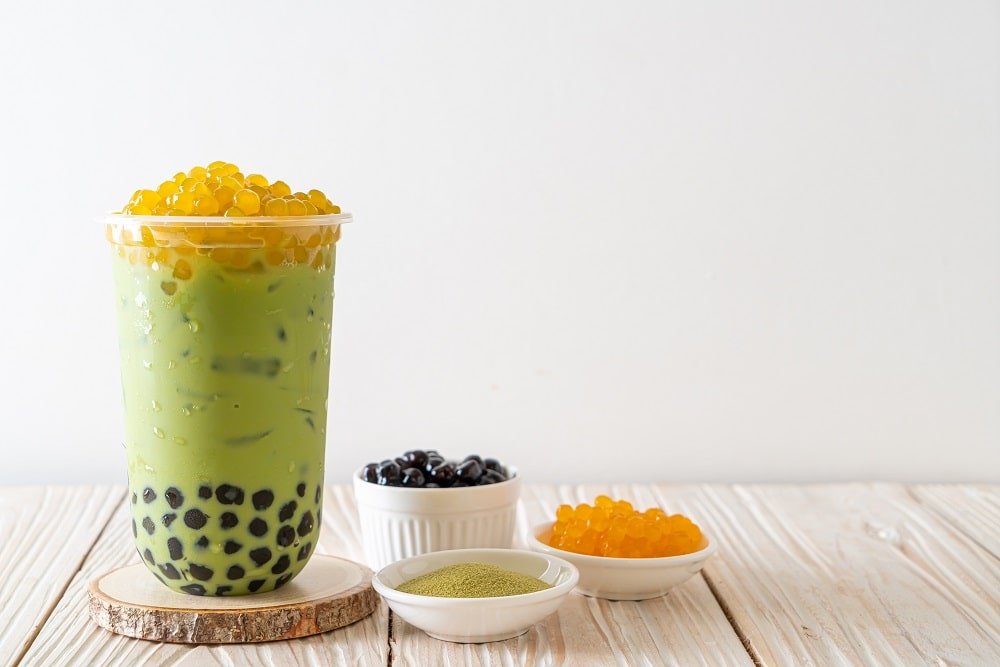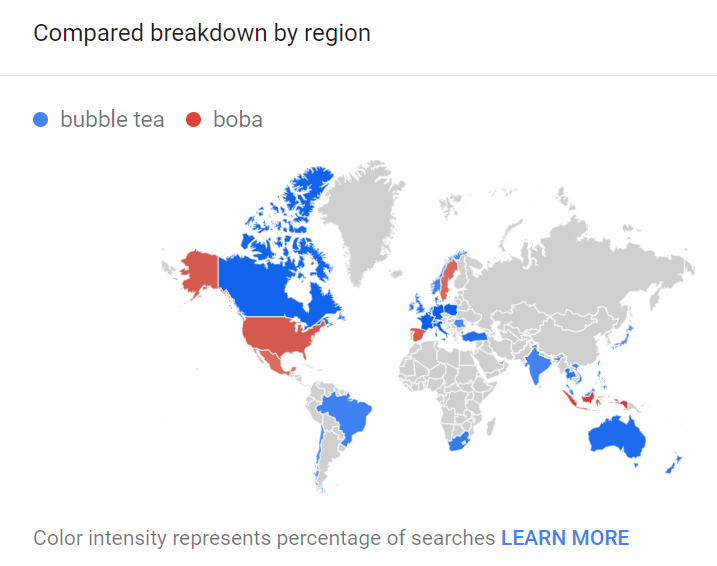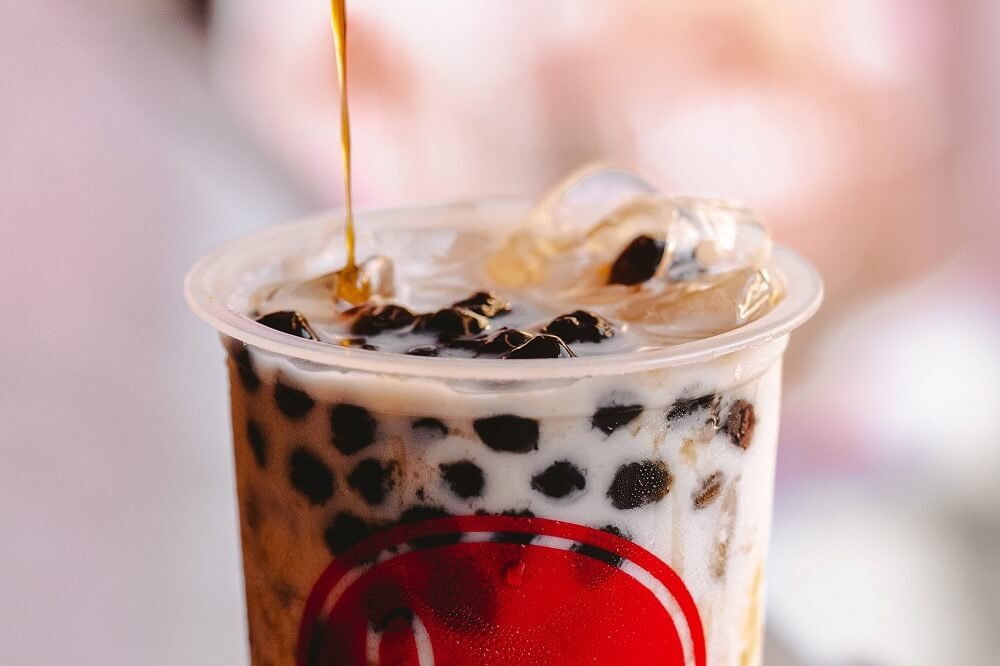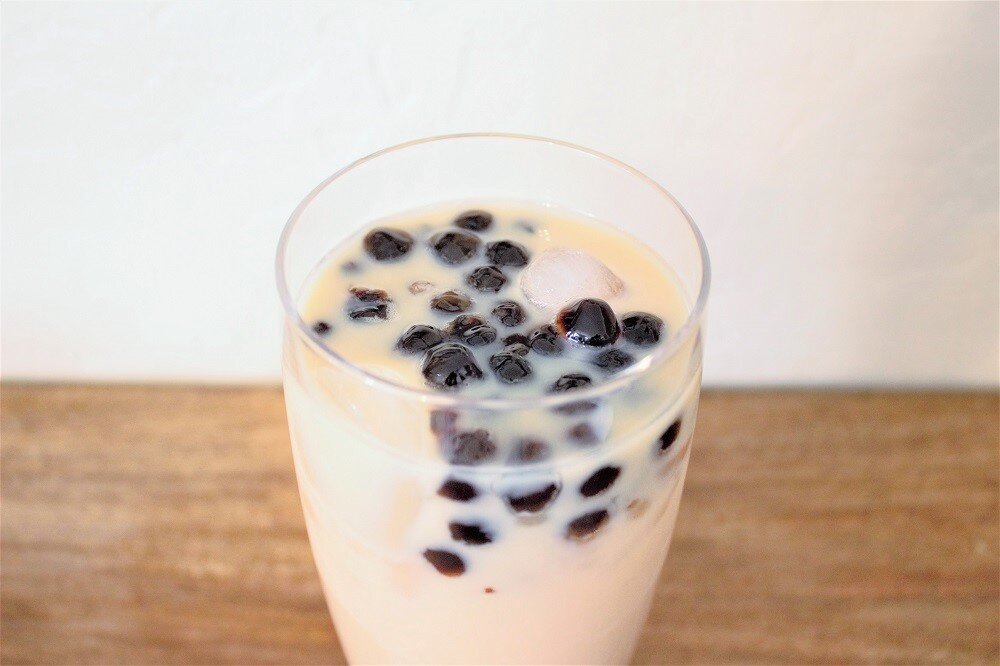Boba vs bubble tea: What it’s called around the world
From boba milk tea to bubble tea to milk tea with pearls, the list of possible names for the beloved trendy drink goes on and on. Boba tea typically has a standard set of flavors and toppings, all originating from its native Taiwan. If it’s all pretty similar, why are there seemingly so many darn names?
To understand the difference between boba and bubble tea, we’ve got to start with boba tea’s history.
The history behind boba’s many names
The squishy, sweetened tapioca balls enjoyed in milk teas today are generally made with starch from the cassava root. Syrups, sugar, and dyes often add the deep brown color you’re likely familiar with. Looking at the various names, there is actually a good reason each of them came about and they all refer to slightly different things. In other words, bubble tea, boba, and pearl milk tea aren’t *technically* the same.
Bubble tea
Contrary to what the name suggests, bubble tea does not refer to the tapioca balls as bubbles. Bubble tea comes from the layer of foam and small bubbles that form at the top of the milk tea when shaken [1]. Tapioca balls have nothing to do with it!
Pearls
The original tapioca balls used in milk tea drinks were 1/12” in size, similar to the size of a real pearl [2]. The use of smaller tapioca balls gave way to the name pearl milk tea. I have also heard about original tapioca balls maintaining a more translucent or whitish color like pearls before the industry started to use the dyes and syrups that turn them brown. However, I couldn’t find an official source to back this up, so you can decide on this story for yourself!
🍵 Read next: Is boba bad for you?
Boba
Finally, we get to the more ubiquitous name across the United States: boba. At some point, tapioca balls used in teas became bigger and the deep brown color became the norm. While boba tea is typically synonymous with adorable, squishy tea shop mascots and innocent pastel colors, its namesake is actually a bit more...promiscuous.
The story goes that the larger tapioca balls reminded a fan of Hong Kong movie star Amy Yip's large chest [3]. Her nickname, Boba, loosely means "champion of breasts" and stuck as the reigning name of our beloved tapioca balls.
Boba vs bubble tea naming preferences around the world
Are you on team boba or bubble tea? Despite the slight differences of the names’ original meanings, the terms have all come to refer to the same drink and round balls. While we may not know why different regions and countries prefer one name over the other, we can still take a look at their preferences.
Using Google Trends, a Google tool that gives insight into popularity behind search trends on their search engine, we can take a peek to see how bubble tea and boba stack up next to each other.
Boba vs bubble tea in the United States
For a while, the popularity of both terms was about equal, only branching off in 2019 with boba gaining more favor. Today, it looks like boba is the preferred term by far across the country.
Breaking down the usage of each search term by location, we can start to see some patterns emerge.
All in all, the majority of states prefer boba vs bubble tea. Interestingly enough, the East Coast, some Midwest states, Oregon, and Washington all use bubble tea more often.
Boba vs bubble tea worldwide
Zooming out to a global view of the English-speaking world, things look a bit different for the boba vs bubble tea debate. Bubble tea has had an edge over boba for years, with the two at almost equal popularity only recently.
When it comes to English-speaking countries, the United States is an anomaly with its preference of boba. Other countries like Canada, Australia, the UK, and South Africa all prefer bubble tea when referring to the delicious tapioca enhanced drink.
What are the actual tapioca balls called worldwide?
Something else worth noting is that bubble tea and boba can refer to just the tea itself, but not the tapioca balls. If you were to walk into a bubble tea/ boba tea/ pearl milk tea shop in a different country, would you know how to ask for the chewy ball add-ins?
Comparing some common variations that refer to tapioca balls, we can see a clear winner emerge. Tapioca pearls are definitely the name of choice, although Indonesia seems to favor boba pearls in its milk tea.
Of course, just “boba” by itself is also used to refer to balls, but because the tea is also called boba, there is no way to separate the two for a true comparison.
If you’re curious to see whether boba or bubble tea is most popular in your country, take a closer look on Google Trends!
-
[1] Reinfrank, Alkira, and Bernice Chan. “Who Invented Bubble Tea?” South China Morning Post, 30 Apr. 2020, www.scmp.com/lifestyle/food-drink/article/2187047/history-bubble-tea-how-boba-born-staff-competition-taiwan.
[2] “Tapioca Pearls (Boba Balls).” Boba Tea Direct, www.bobateadirect.com/boba-tapioca-pearls/.
[3] Wong, Maggie Hiufu. “The Rise of Bubble Tea, One of Taiwan's Most Beloved Beverages.” CNN, Cable News Network, 30 Apr. 2020, www.cnn.com/travel/article/taiwan-bubble-tea-origins/index.html.
more blogs to sip on…









![[Spotlight] Handmade boba plant pot entrepreneurial duo](https://images.squarespace-cdn.com/content/v1/6008e4b84dfdb80938cd0442/0bfd5258-a9b8-4f99-8d30-85218ac54c41/boba+tea+pot+eighty+degree+mag.jpg)

